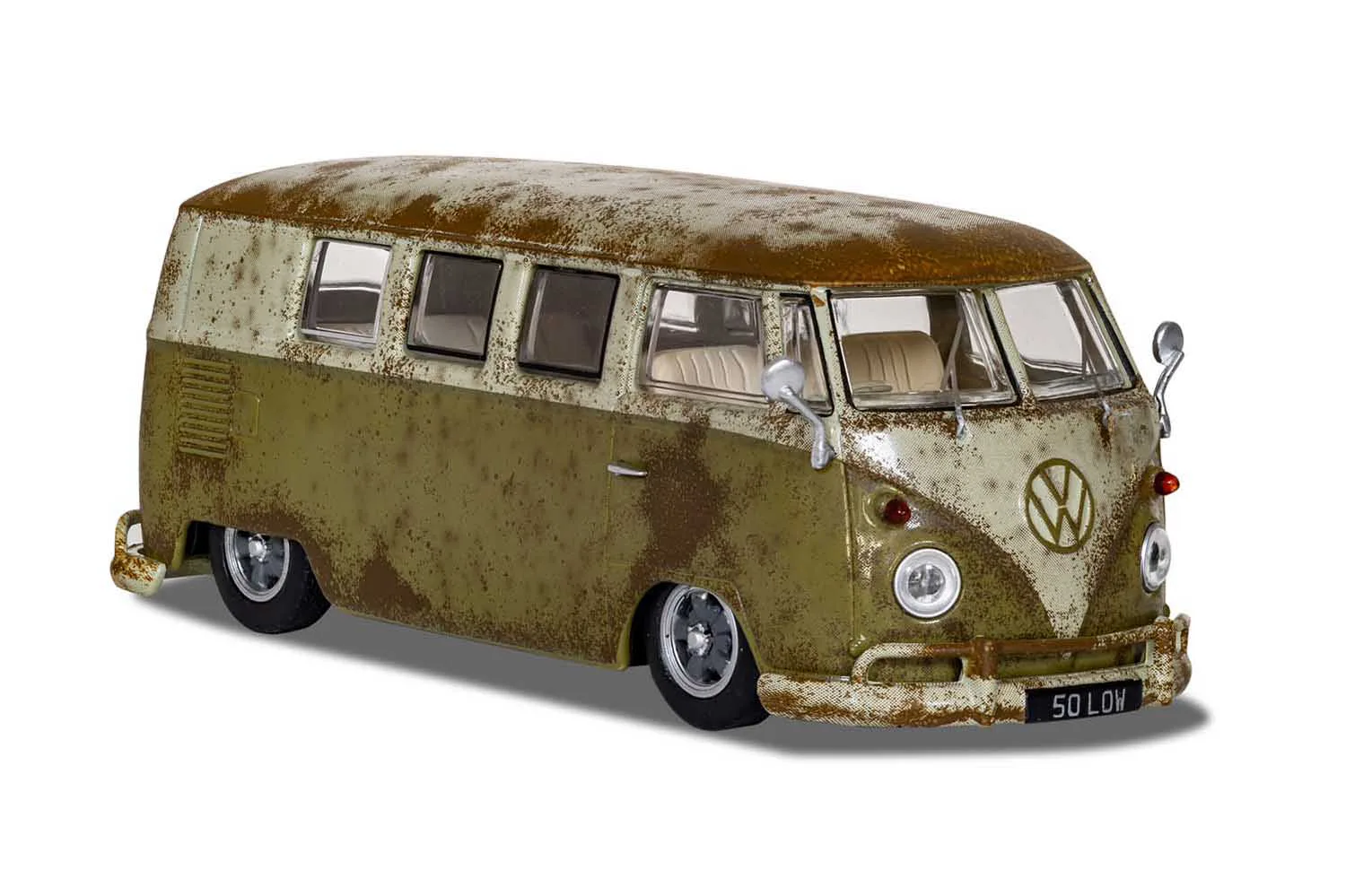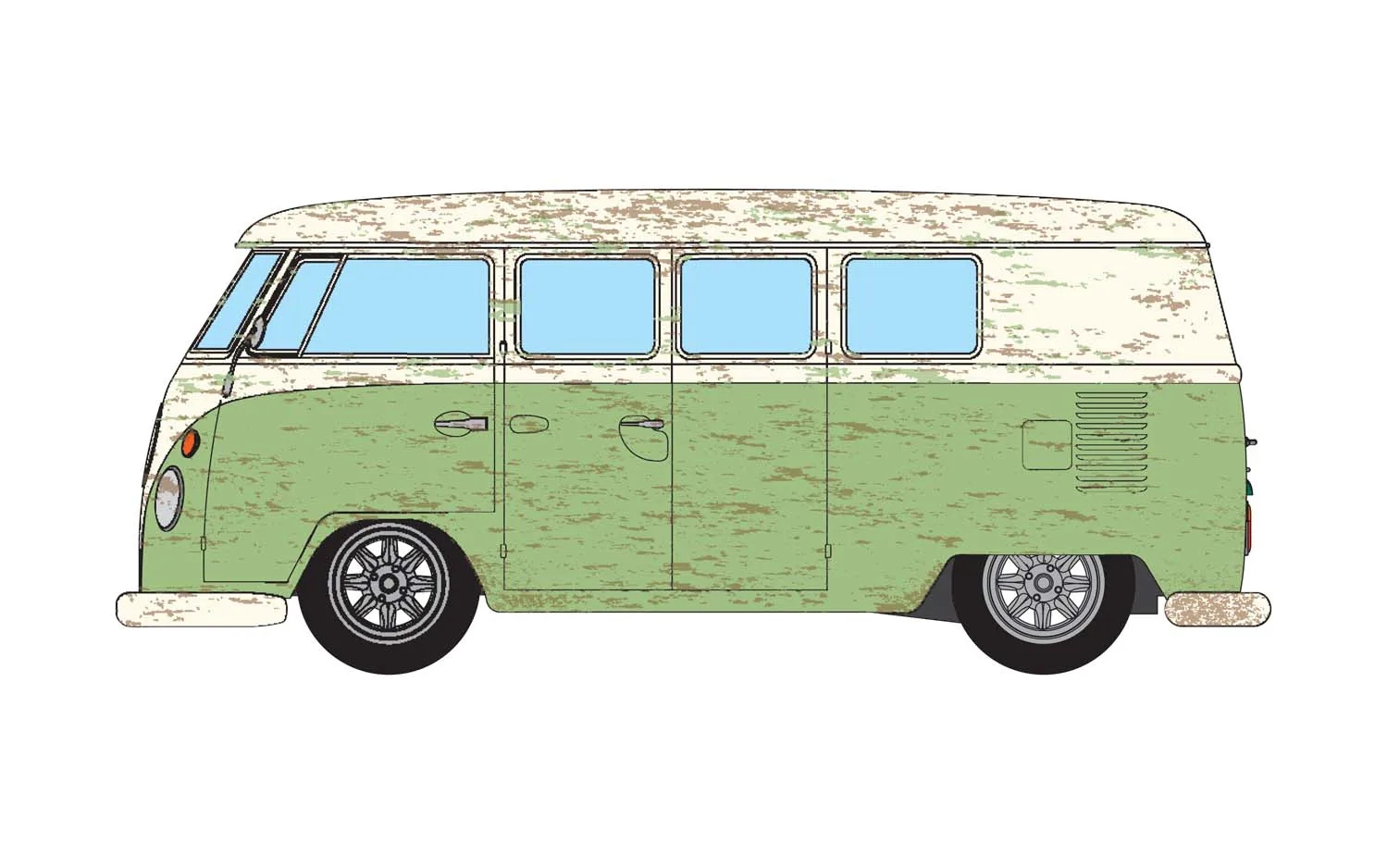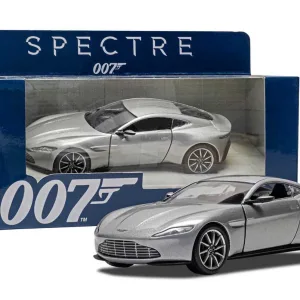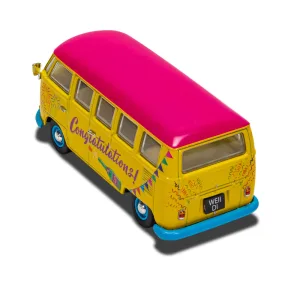Volkswagen Campervan Type 2 1500, Rat Look Mango Green and Seagull Grey
The Rat-Rod or Rat-Look scene is a huge and growing part of classic car culture and air-cooled VWs have been central to its creation and popularity. RAT is an acronym for ‘Recycled Automotive Transport’, a perhaps ironic salute to the prevailing western culture, but RAT-Look vehicles are not what they appear.
Mechanically they are often far better than they were when new. More powerful engines, better brakes and custom suspension are hidden under an exterior which has been carefully and expensively prepared to look like it’s been abandoned in the sun for decades. The finish is often preserved by a matt clear coat varnish, which stops the vehicle rusting and preserves that ‘patina’. The origin of the ‘look’ came from 1950s hot rodders in the USA being much more interested in go than show, spending every penny on the mechanics of their ride and not worrying about the appearance because money and time could be better spent elsewhere. That produced a look which started to be emulated and became cool.
As a new generation started to modify cars with unit construction and single-width styling there was more room for expression in paint and less in terms of the visible engines and axles which defined the 1960s Hot Rod movement. On these new generation modified cars stance became all important, as the look of the car could be radically altered without changing too much sheet metal.






